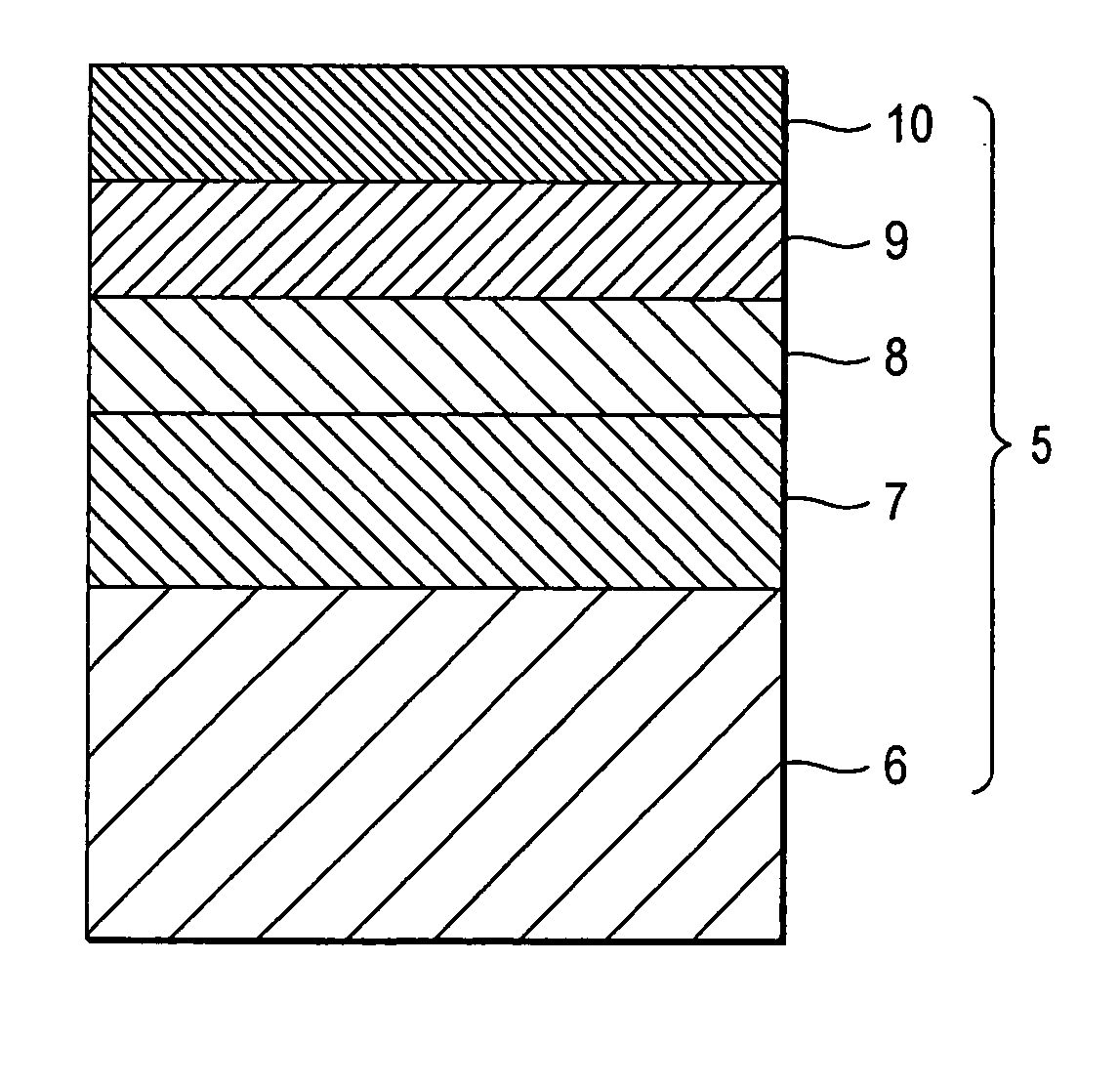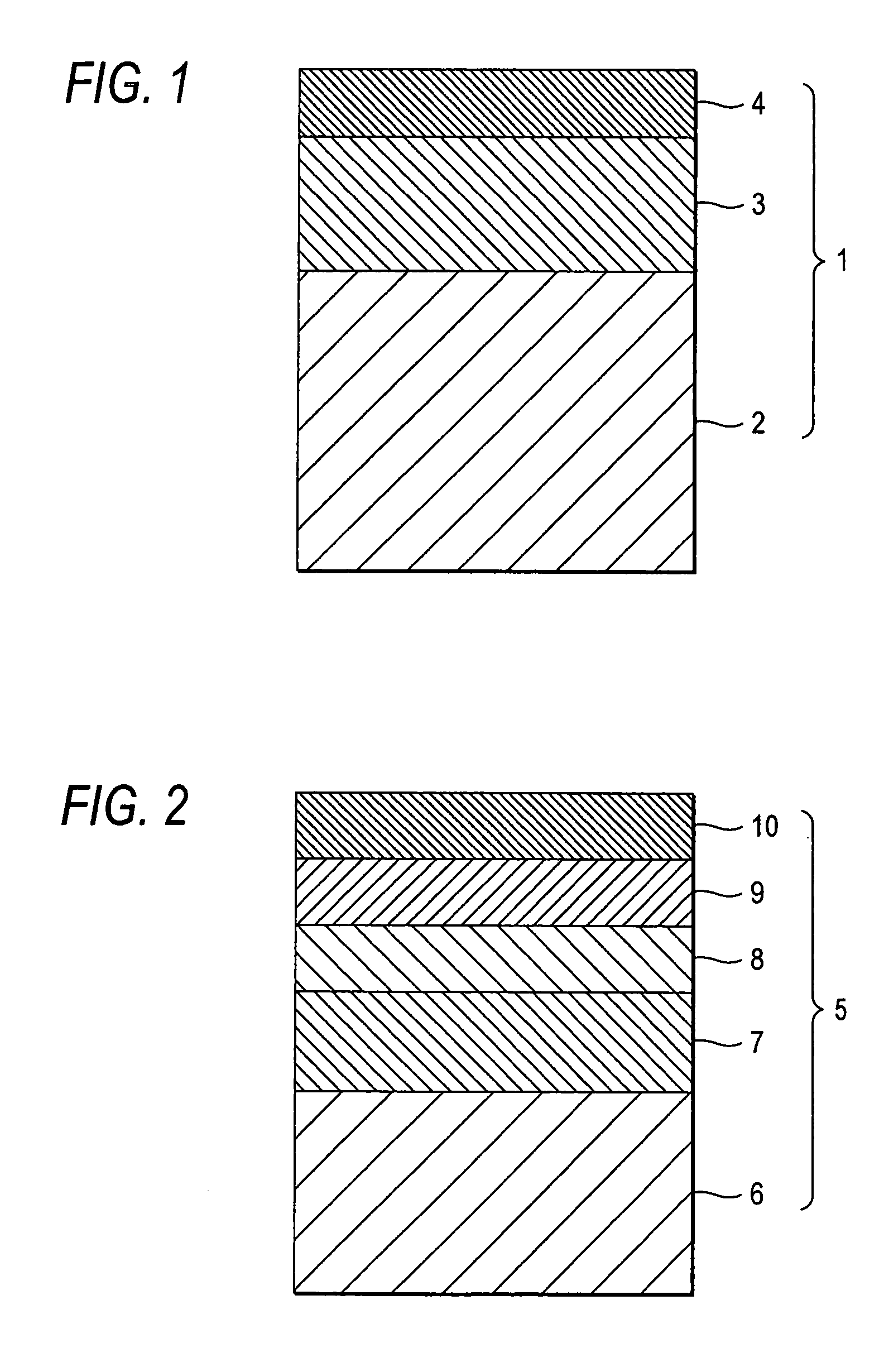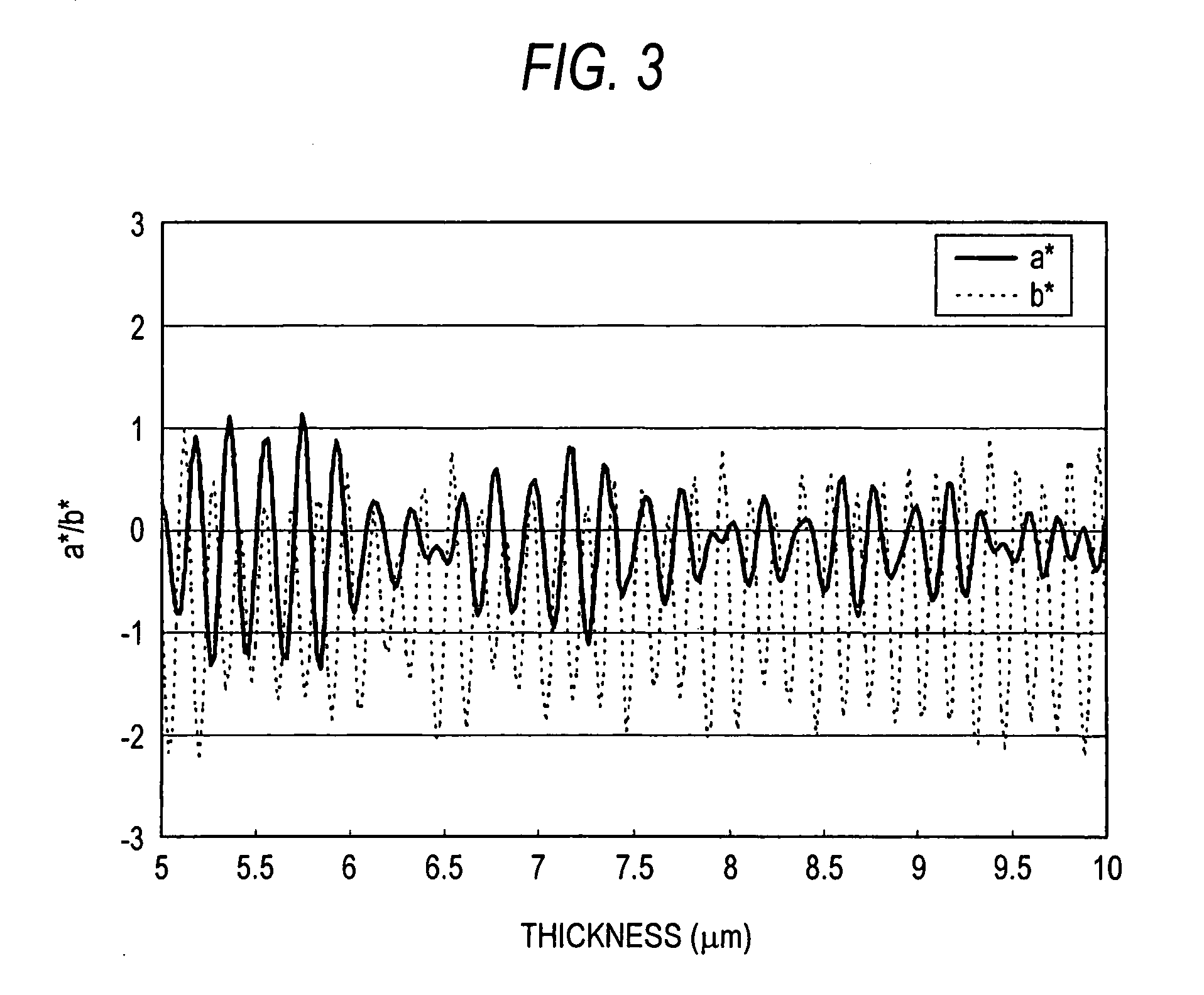Anti-Reflection Film
a technology of anti-reflection film and film layer, applied in the field of anti-reflection film, can solve the problems of remarkable uneven interference display, deterioration of coatability, and rigid deterioration of the display to which the anti-reflection film is applied, and achieve the effect of sufficient anti-reflection property and scratch resistance, improved resistance to interference unevenness, and high productivity
- Summary
- Abstract
- Description
- Claims
- Application Information
AI Technical Summary
Benefits of technology
Problems solved by technology
Method used
Image
Examples
example 1
(1) Coating of Hard Coat Layer Coating Solution
[0269] Using a microgravure roll having a gravure pattern of 80 lines per inch and a depth of 40 μm and a diameter of 50 mm and a doctor blade, the hard coat layer coating solution was coated over a triacetyl cellulose film having a width of 1,340 mm and a thickness of 80 μm (TDY80UL, produced by Fuji Optomaterials Co., Ltd.; refractive index nb: 1.486) which was being unwound from roll at a gravure roll rotary speed of 65 rpm and a conveying speed of 20 m / min. 60° C. drying air was blown onto the coat layer at a flow rate of from 0.1 m / sec to 2 m / sec wherein the flow rate increases from the former half of the drying zone to the latter half of the drying zone for a total of 150 seconds. Using a 160 W / cm air-cooled metal halide lamp (produced by EYE GRAPHICS CO., LTD.) while the air in the system was being purged with nitrogen, the coat layer was cured by irradiating with ultraviolet rays at an illuminance of 200 mW and a dose of 120 mJ...
example 2
(1) Spreading and Saponification of Hard Coat Layer / Three-Layer Anti-Reflection Layer
[0286] The same hard coat layers (HC layer) as in Samples 1 to 8 of Example 1 were each formed on a triacetyl cellulose film having a thickness of 80 μm (TDY80UL, produced by Fuji Optomaterials Co., Ltd.). Subsequently, the aforementioned middle refractive index layer coating solution, high refractive index layer coating solution and low refractive index layer coating solution A were coated over each of the hard coat layers under the same coating conditions as in the low refractive index layer of Example 1, and then subjected to drying of solvent and irradiation with ultraviolet rays under the same conditions as set forth in Table 2 to form a middle refractive index layer (Mn layer), a high refractive index layer (Hn layer) and a low refractive index layer (Ln layer) in this order. Thus, films having a hard coat layer and a three-layer anti-reflection layer formed thereon were obtained. These films...
example 3
[0291] A PVA film was dipped in an aqueous solution of 2.0 g / l of iodine and 4.0 g / l of potassium iodide at 25° C. for 240 seconds, dipped in an aqueous solution of 10 g / l of boric acid at 25° C. for 60 seconds, introduced into a tenter stretching machine as shown in FIG. 2 in JP-A-2002-86554 where it was then stretched by a factor of 5.3, and then kept constant in width by the tenter which had been bent with respect to the stretching direction as shown in FIG. 2. The film was dried in a 80° C. atmosphere, and then released from the tenter. The difference in conveying speed between the right and left tenter clips was less than 0.05%. The angle between the central line of the film thus introduced and the central line of the film fed to the subsequent step was 46°. Herein, |L1−L2| was 0.7 m, W was 0.7 m, and there can be established the relationship |L1−L2|=W. The substantial stretching direction Ax-Cx at the outlet of the tenter was oblique to the central line 22 of the film fed to t...
PUM
| Property | Measurement | Unit |
|---|---|---|
| thickness | aaaaa | aaaaa |
| thickness | aaaaa | aaaaa |
| refractive index nb | aaaaa | aaaaa |
Abstract
Description
Claims
Application Information
 Login to View More
Login to View More - R&D
- Intellectual Property
- Life Sciences
- Materials
- Tech Scout
- Unparalleled Data Quality
- Higher Quality Content
- 60% Fewer Hallucinations
Browse by: Latest US Patents, China's latest patents, Technical Efficacy Thesaurus, Application Domain, Technology Topic, Popular Technical Reports.
© 2025 PatSnap. All rights reserved.Legal|Privacy policy|Modern Slavery Act Transparency Statement|Sitemap|About US| Contact US: help@patsnap.com



